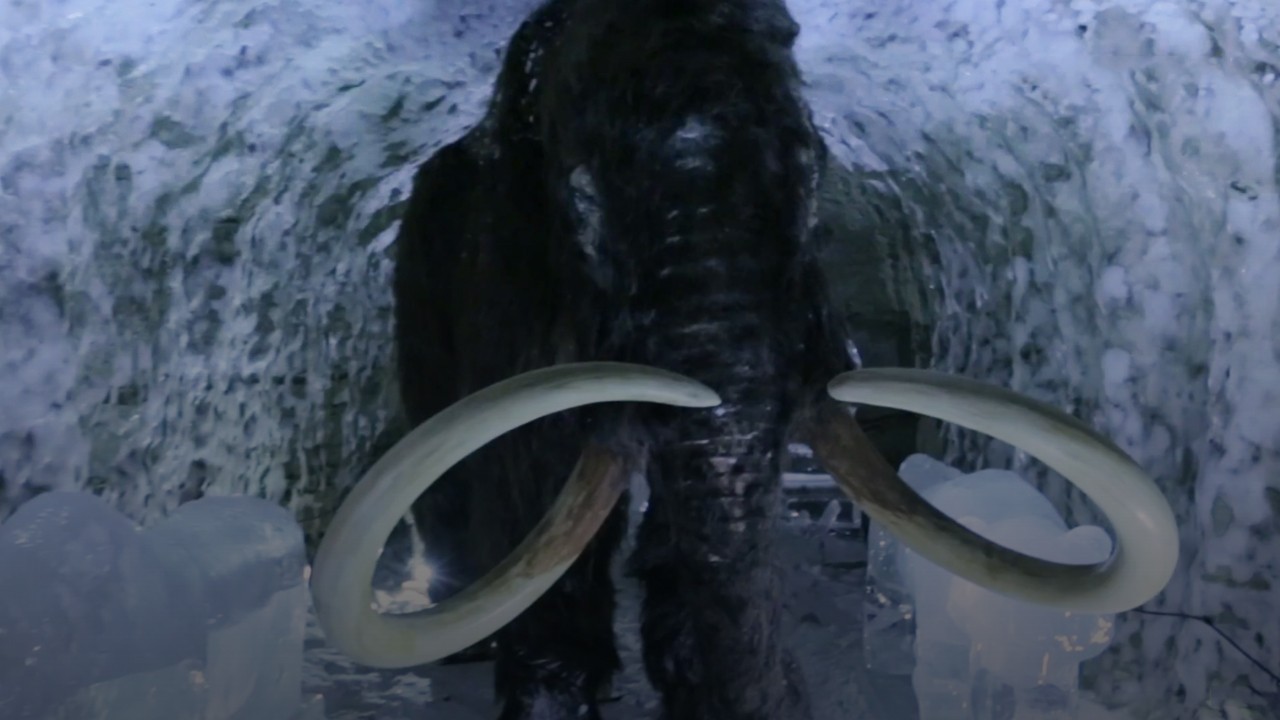Photo: Getty Images
Scientists have discovered the ancient remains of bone-crushing hyenas north of the Arctic circle, showing that they roamed the frozen landscape during the last ice age.In a study published on Tuesday in Open Quaternary, researchers from the University at Buffalo identified two teeth that were collected in the Yukon in the 70s as belonging to ancient hyenas, providing a missing link between ancient North American and Eurasian populations.This discovery gives scientists a clue about the hyenas’ role in ancient Arctic ecosystems. Between 1.4 million and 850,000 years ago, they may have hunted herds of caribou or feasted on the remains of mammoths, according to researchers. Their ability to crack bones—giving them the name “bone-crushing”—made them skilled scavengers able to feed on carcasses of most large herbivores.“Hyenas are good ‘recyclers’ of their ecosystems because of their ability to eat and digest nearly everything on a carcass,” lead author Jack Tseng said in an email. “The Arctic was and is an unforgiving environment, so hunter-scavengers like hyenas may have been the most adapted to low abundance of food.”Hyenas no longer prowl North American landscapes, but their fossils are common in Eurasia and some parts of North America. Scientists had long assumed they arrived to the New World by way of the Beringia land bridge before travelling as far south as Mexico, but didn't have strong proof until now. These two tiny teeth bridged a huge geographic gap: they were found about 2,500 miles from hyena fossils in North America and about 4,000 miles from remains in Eurasia. Researchers suspect that competition with other carnivores and environmental change likely contributed to the hyena’s decline, but that question is still up for debate.“The fossils don't tell us why they went extinct, but only that they were widespread from Yukon to Mexico pretty much up until their extinction,” Tseng said. “That leaves an open question of what wiped them out.”The two teeth analyzed by the researchers were part of a huge collection of vertebrate fossils from the Canadian Museum of Nature in Ottawa. Over 50,000 other fossils have been recovered from that Yukon’s northern Old Crow River region in the last century—most of them belonging to herbivores, like bison.Researchers compared these teeth with those of other known hyena fossils, using tiny details to determine the exact genus: Chasmaporthetes, an extinct genus known as the “running hyena.” Because there were only two teeth, researchers were not able to identify the specimen to the species level.Researchers used the rock layers to determine the age of the fossils, suggesting that they’re no older than 1.4 million years old. However, the fossils are hard to precisely date because they were discovered in a river bed, meaning the river swept them from their original location, exposing the sediment along the way.Only four species of hyena persist today: three bone-crushers and one ant-eater. Ancient hyenas, though, had a lot more variety and lived all over the world including the Arctic. How they died remains a mystery, but we now know how they likely got to North America—braving the frigid expanse of an icy land bridge.Listen to CYBER, Motherboard’s new weekly podcast about hacking and cybersecurity.
Researchers suspect that competition with other carnivores and environmental change likely contributed to the hyena’s decline, but that question is still up for debate.“The fossils don't tell us why they went extinct, but only that they were widespread from Yukon to Mexico pretty much up until their extinction,” Tseng said. “That leaves an open question of what wiped them out.”The two teeth analyzed by the researchers were part of a huge collection of vertebrate fossils from the Canadian Museum of Nature in Ottawa. Over 50,000 other fossils have been recovered from that Yukon’s northern Old Crow River region in the last century—most of them belonging to herbivores, like bison.Researchers compared these teeth with those of other known hyena fossils, using tiny details to determine the exact genus: Chasmaporthetes, an extinct genus known as the “running hyena.” Because there were only two teeth, researchers were not able to identify the specimen to the species level.Researchers used the rock layers to determine the age of the fossils, suggesting that they’re no older than 1.4 million years old. However, the fossils are hard to precisely date because they were discovered in a river bed, meaning the river swept them from their original location, exposing the sediment along the way.Only four species of hyena persist today: three bone-crushers and one ant-eater. Ancient hyenas, though, had a lot more variety and lived all over the world including the Arctic. How they died remains a mystery, but we now know how they likely got to North America—braving the frigid expanse of an icy land bridge.Listen to CYBER, Motherboard’s new weekly podcast about hacking and cybersecurity.
Advertisement

Advertisement